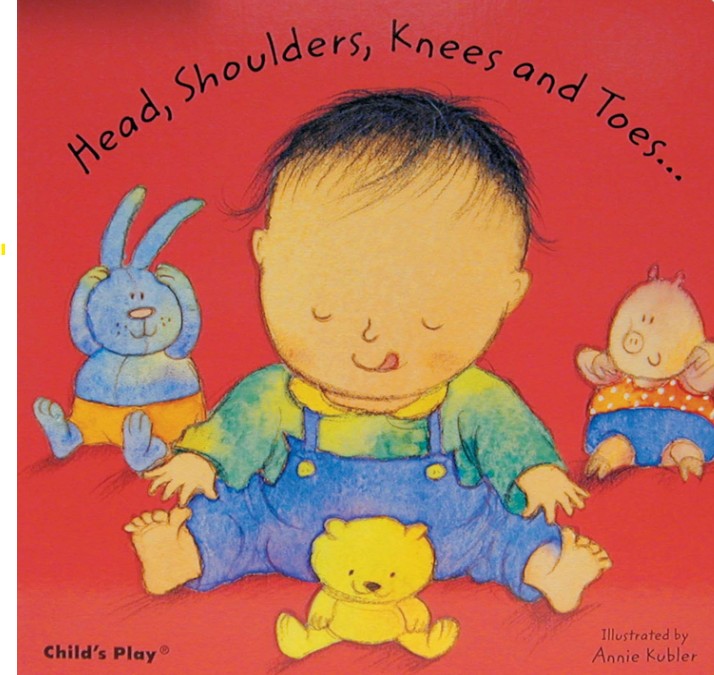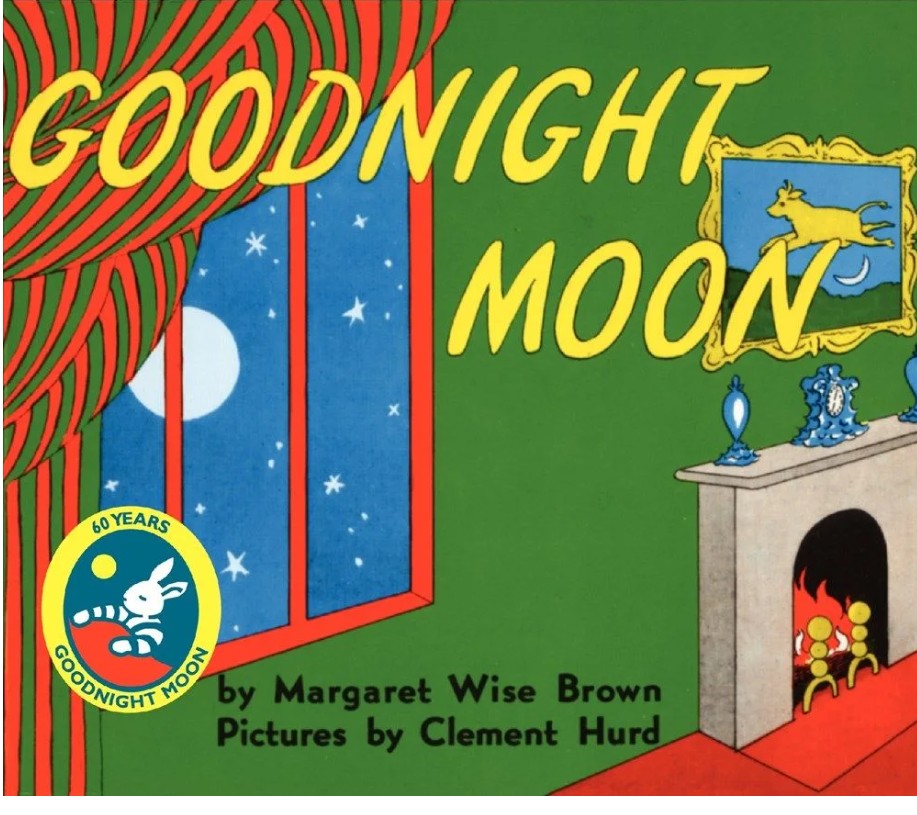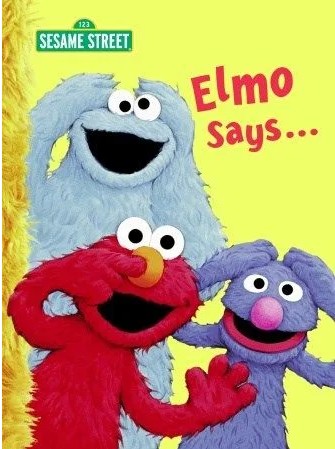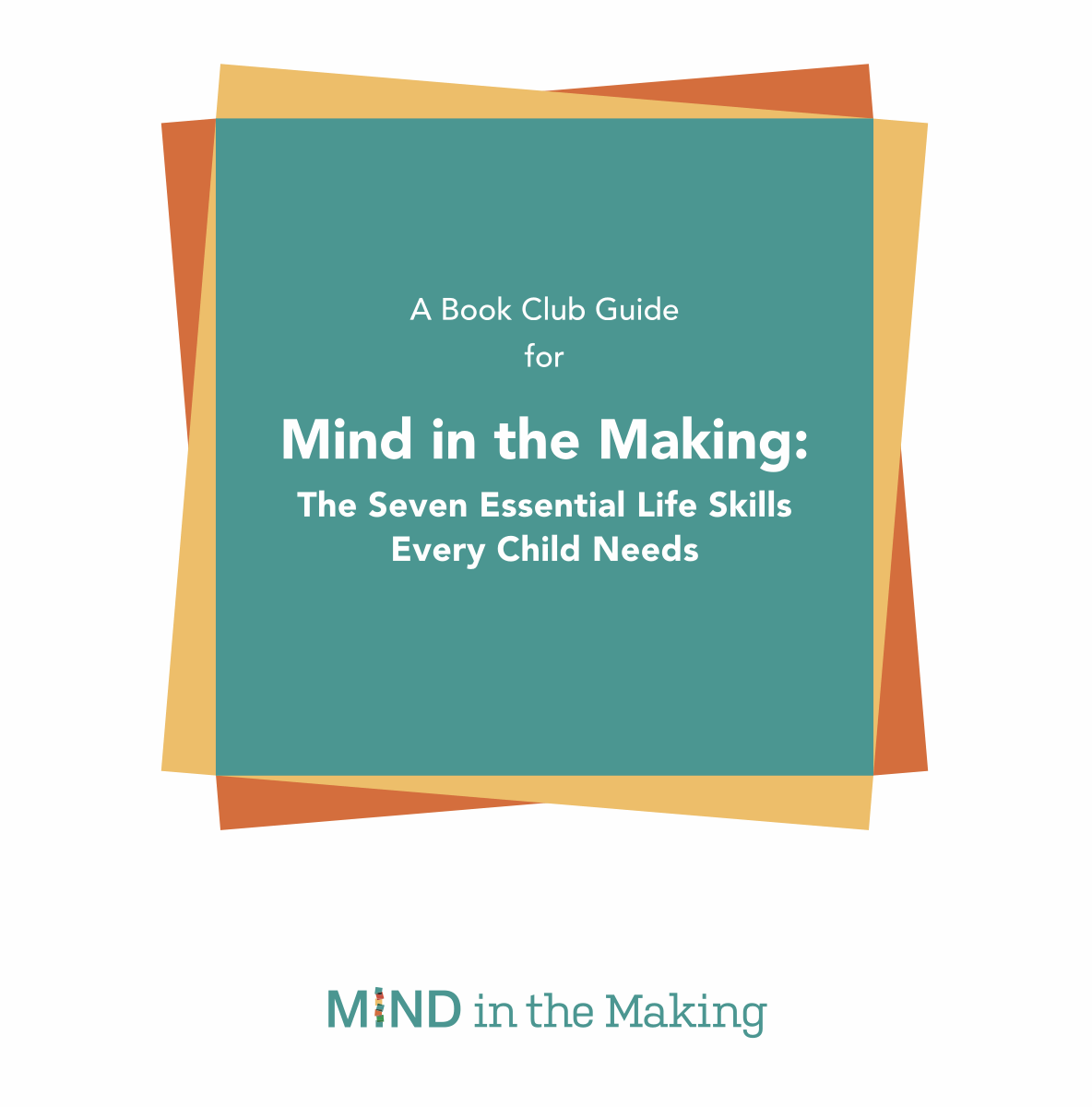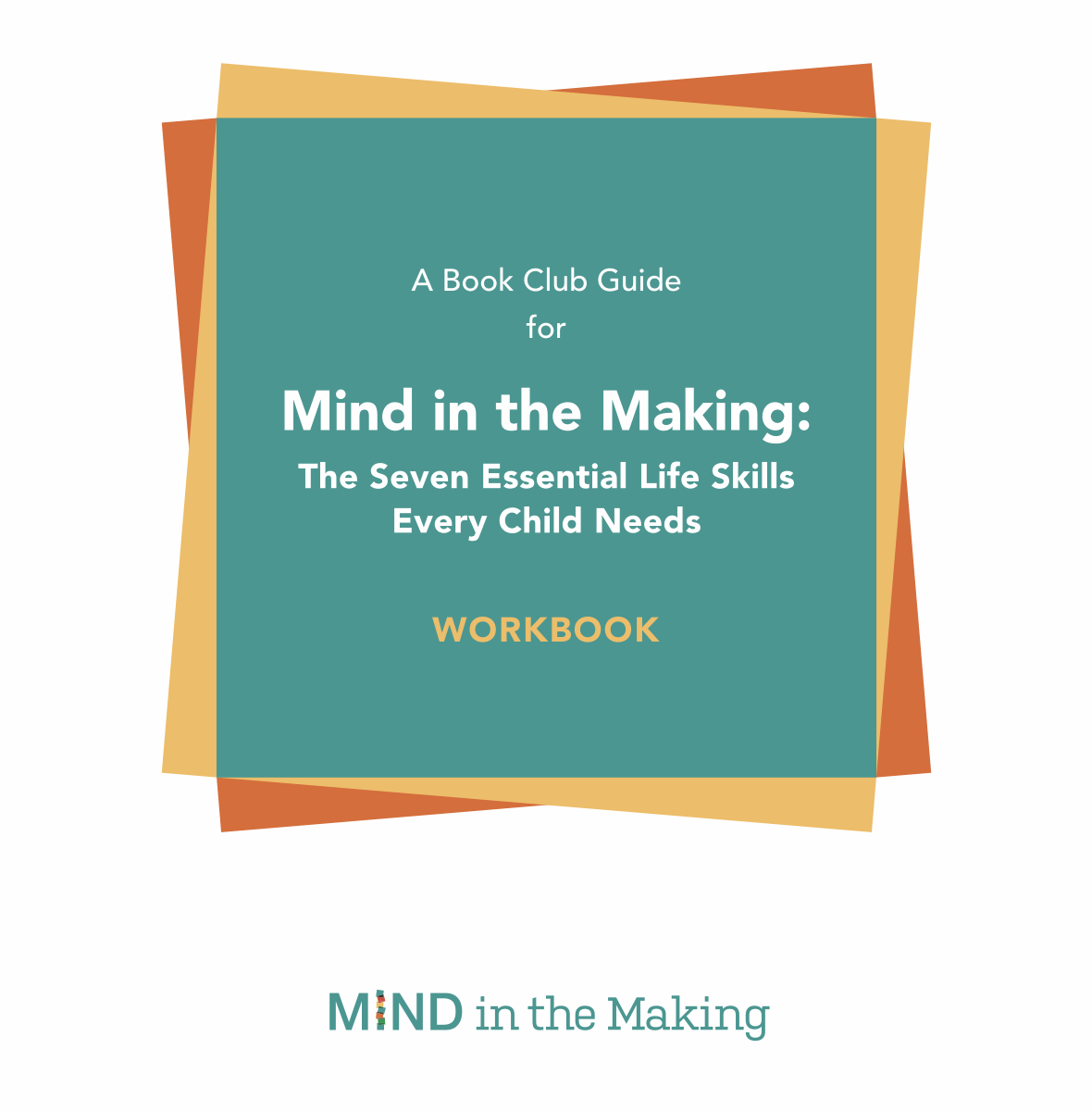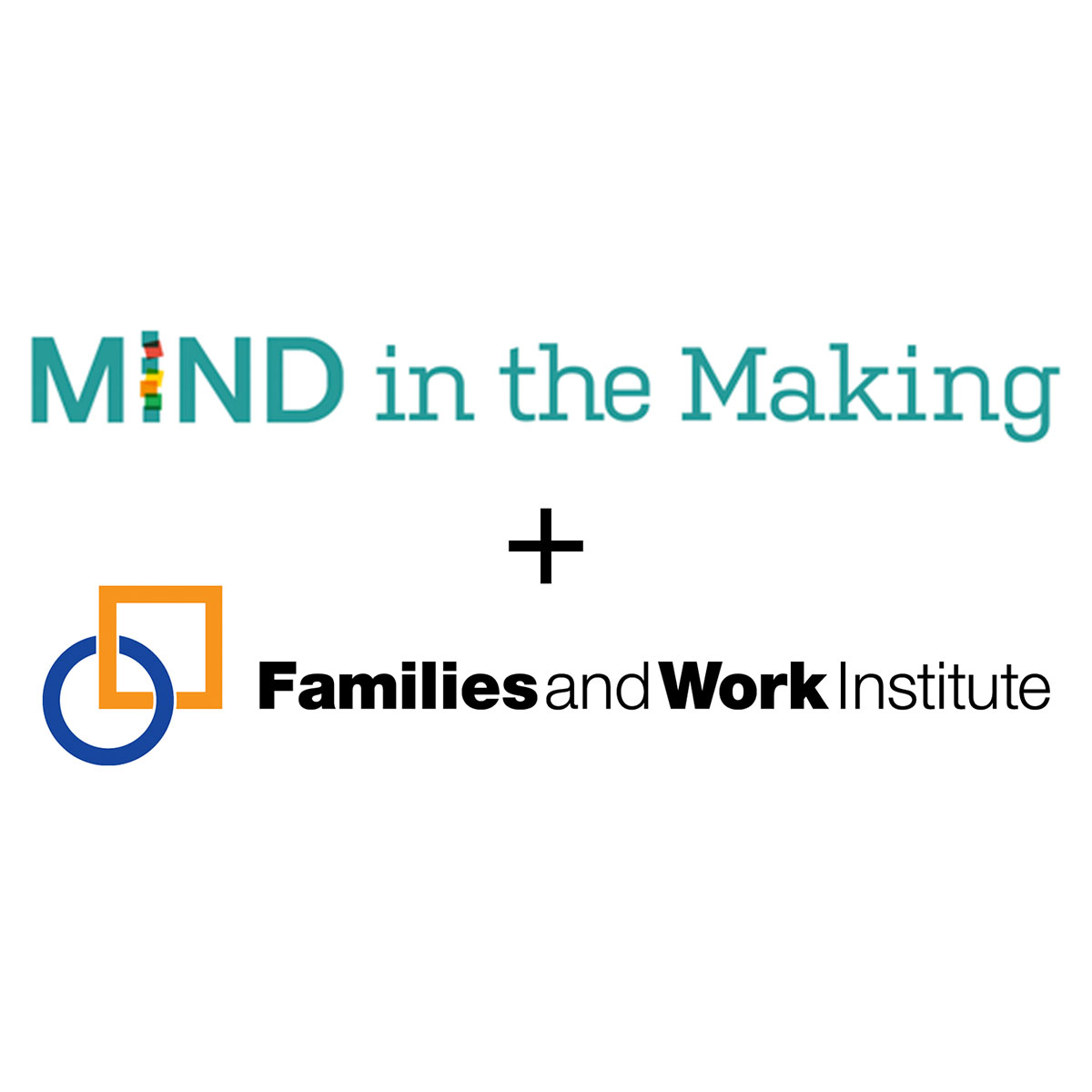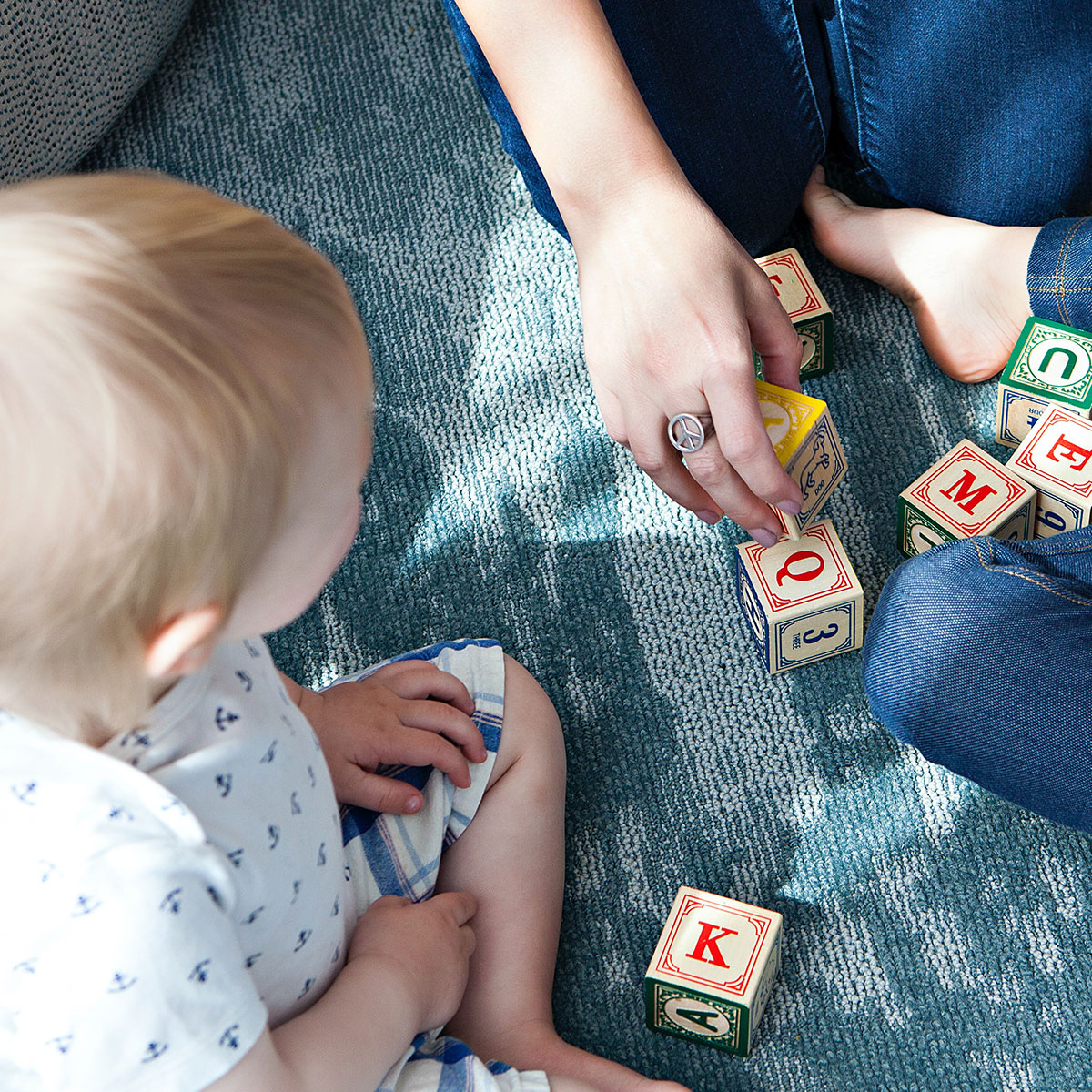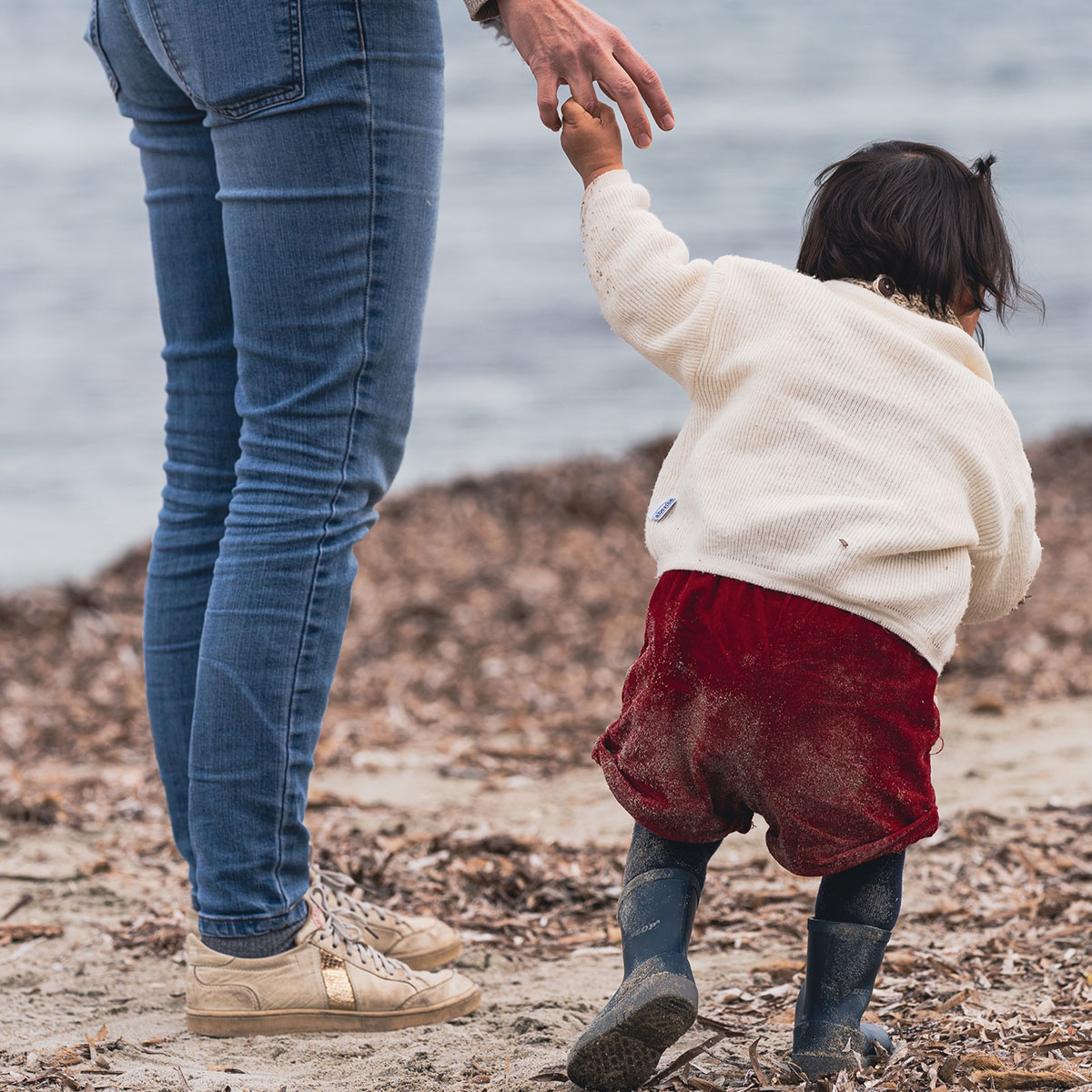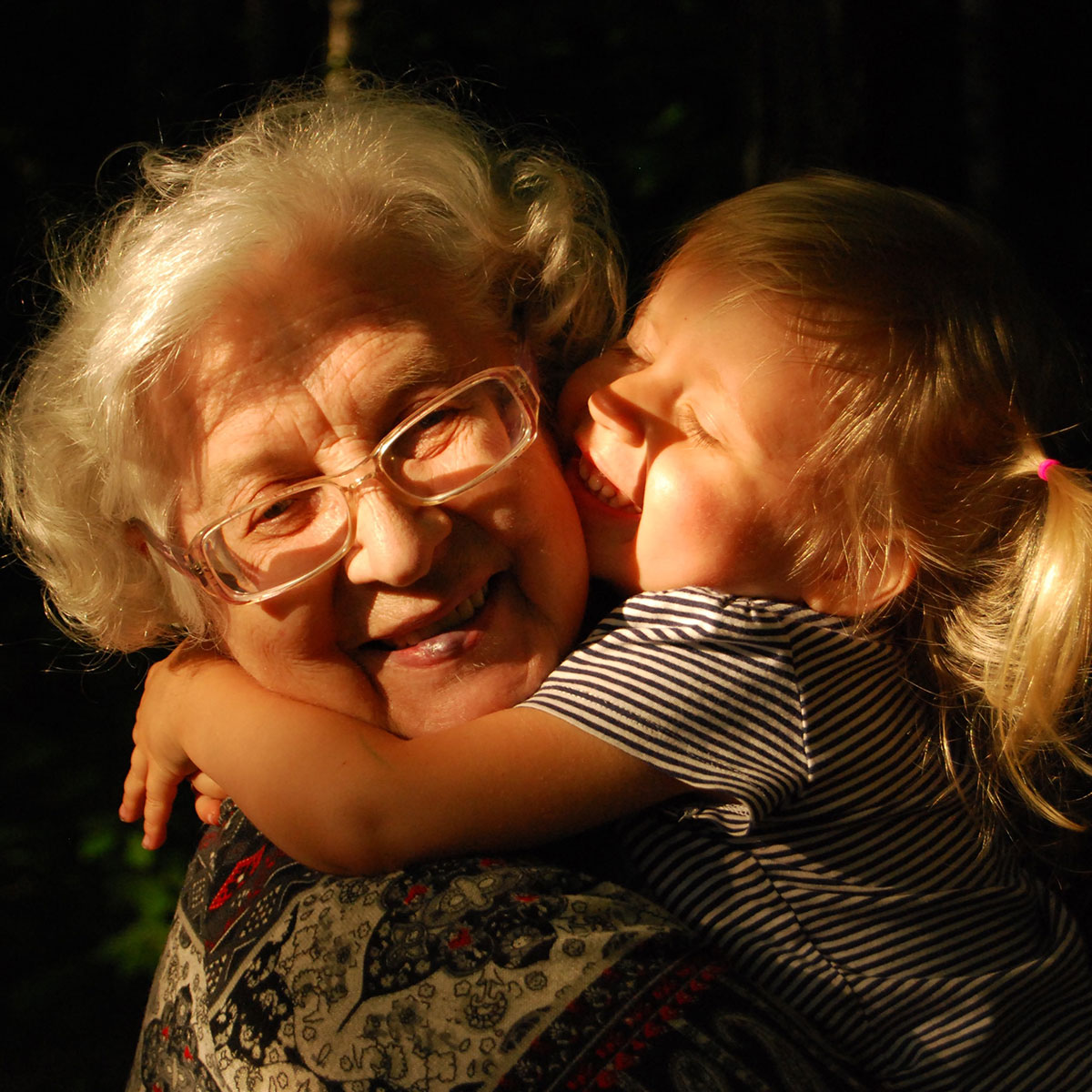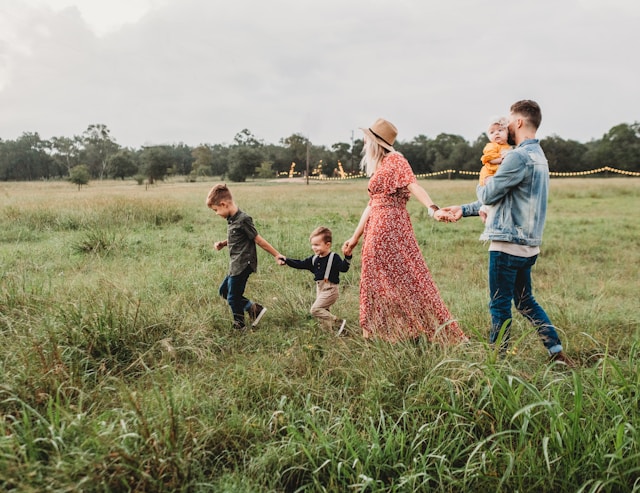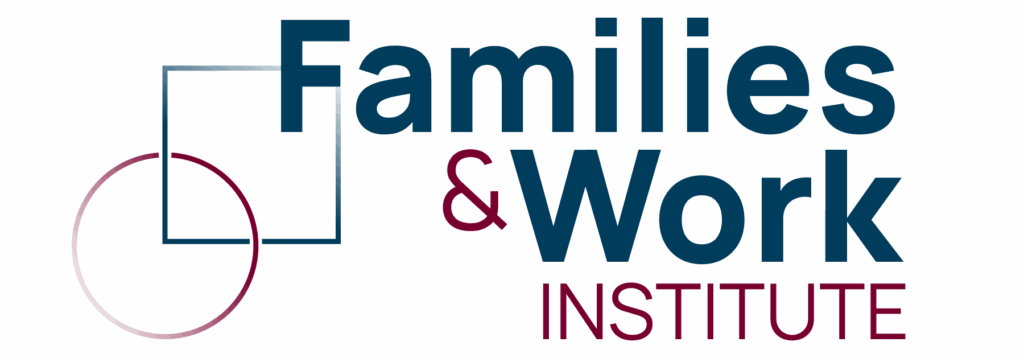Goodnight Moon
Toddler Hitting
Elmo Says
Book Club Guide
Book Club Guide Workbook
Mind in the Making is Joining Families & Work Institute
Mind in the Making is Joining Families & Work Institute
- By Ellen Galinsky
- News & Updates
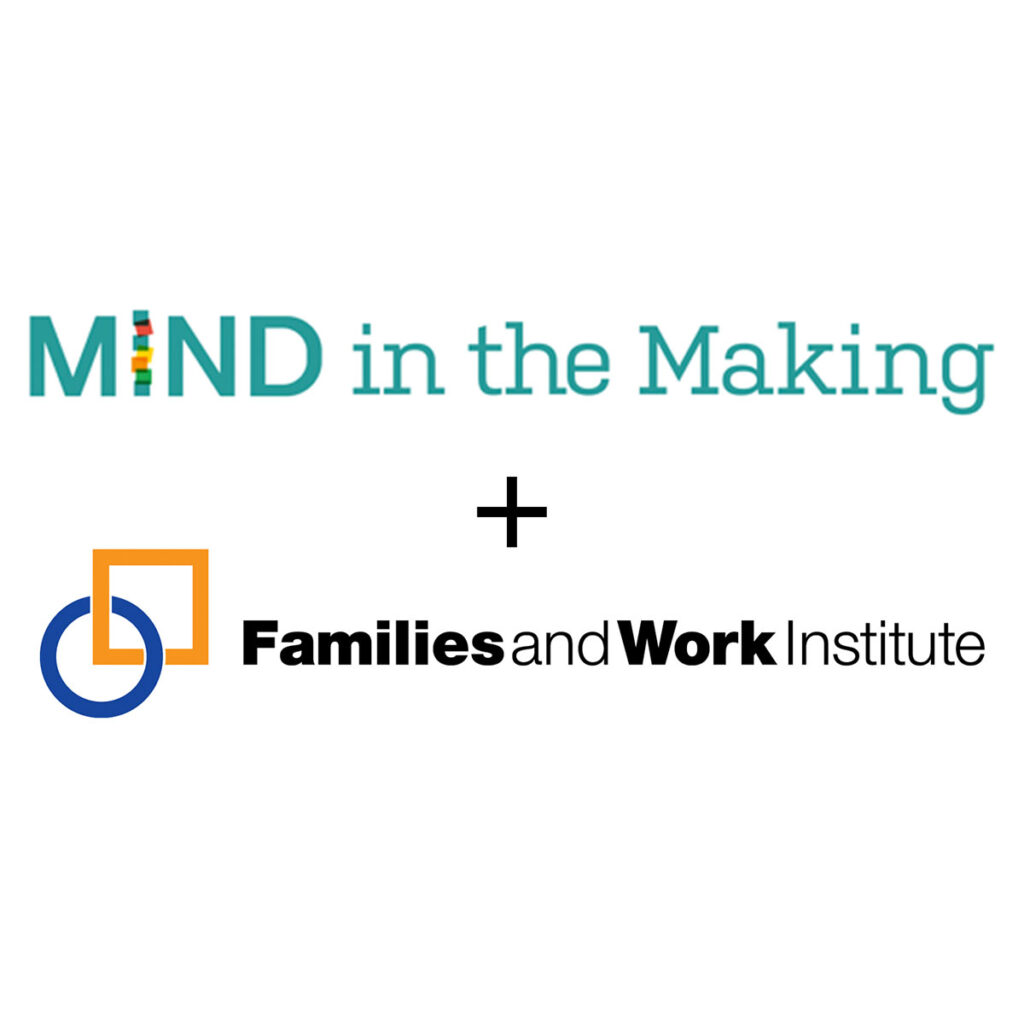
A Letter from Ellen Galinsky, Founder of Mind in the Making:
On September 30, 2022, Mind in the Making is joining Families and Work Institute (FWI).
Given the pandemic and rapidly changing landscape, this move presents an important opportunity both for the MITM team and me personally to take on new research on the major issues of our times as well as on early childhood and youth voice.
The transition to FWI—a nonprofit, non-partisan research organization and think tank I co-founded in 1989 to focus on the changing workforce/workplace and changing families and their children—will also allow me to expand my own research projects around civic science.
One of the first endeavors is a partnership with the University of Minnesota. Starting in fall 2022, I will serve as co-director of a forthcoming Civic Science Center alongside Philip David Zelazo, PhD, Nancy M. and John E. Lindahl Professor, Institute of Child Development, University of Minnesota. The new Center aims to be the “go to” place for understanding and promoting the development of executive function skills and related essential life skills in children, adolescents, parents and practitioners who work with them.
“Ellen Galinsky has a distinguished history of working directly with communities to address some of society’s most pressing problems,” said Zelazo. “Together we will coordinate research, policy and practices to close opportunity and achievement gaps by helping children and youth succeed in school and in life.”
I am proud of the work we’ve accomplished during the past six years at the Bezos Family Foundation. Our team forged new state and national partnerships to share the science of early learning, created new actionable resources to promote executive function-based life skills within children and adults and developed soon-to-be-released digital learning modules that will greatly increase the accessibility of our early childhood training.
As Mike Bezos, Vice President of the Bezos Family Foundation shared, “Ellen Galinsky and the entire MITM team have been valuable contributors to our investments in the science of learning and the experiences that youth need to thrive. The Foundation remains as committed as ever to fueling and amplifying research. We look forward to exploring opportunities to work together with MITM in the future where our individual missions intersect.”
Please stay updated on our work as it evolves by following us on Facebook and Twitter!
With gratitude,
Ellen
Author, Mind in the Making and The Breakthrough Years (forthcoming)
Mind in the Making and Amazing Babies
Mind in the Making and Amazing Babies
- By Ellen Galinsky
- From the Field, Latest Research
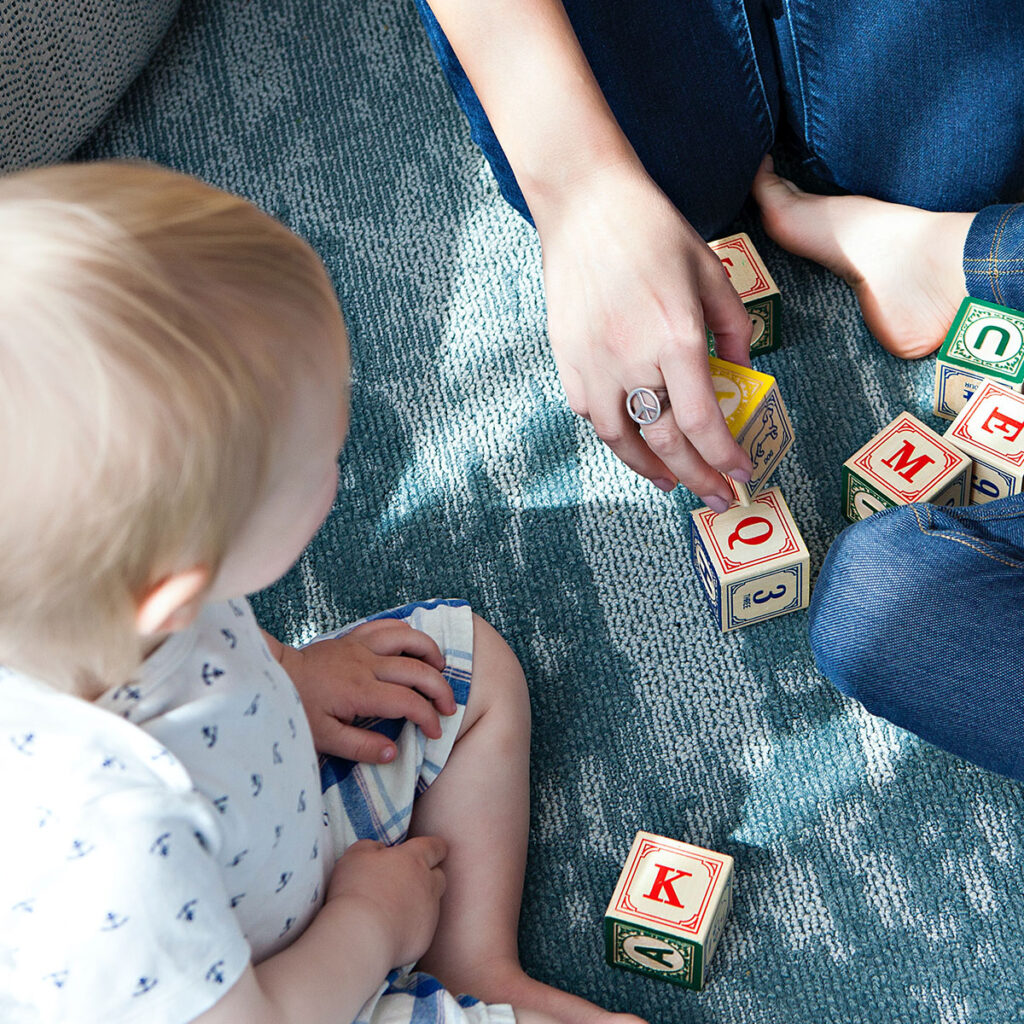
An Exercise: What Is Life Like Today? Think about some words that describe what life is like today. What words come to mind?
Did your words reflect the challenges of living in a complicated, distracting world? Did you think of words that describe feelings of being rushed, time starved, of having too much to do and not enough time to do it? Did you focus on the uncertainties, the changes that ricochet in our economic systems, or the volatility of relationships in a diverse and unpredictable world? Did you focus on the moments that give you pleasure, large and small?
Life today can be all of these things—complex, distracting, fast moving, 24-7, and stressful. It is also joyful and full of exciting possibilities.
We know that if it is this way for us, it is only going to be more so for our children. We all want the best for our children, but how do we help them not only survive but thrive, today and in the future?
It is clear that there is information children need to learn—facts, figures, concepts, insights, and understandings. But we have neglected something that is equally essential—children need life skills.
What do I mean by skills? Take the words often used to describe the world: complicated, distracting. Or the words about time: 24-7, rushed, time starved, too much to do and not enough time to do it. To navigate this world, children need to focus, to determine what is important and to pay attention to this, amid many distractions. Focus is one of the essential skills we need to promote in our children.
Or take the words used to describe the complexity of life in an uncertain, even volatile world. Another essential skill is the ability to understand others’ perspectives—perspective taking—despite whether we end up agreeing or disagreeing with them.
There are three essential points about these life skills:
- These skills are not only important for children; we as adults need them just as much as children do. And, in fact, we have to practice them ourselves to promote them in our children. That’s why I call them life skills.
- We don’t need expensive programs, materials, or equipment to promote these skills. We can promote them in everyday ways through the everyday fun things we do with children.
- It is never too late to help children learn these life skills, no matter what their ages.
So many books for parents make us feel guilty or that we have made mistakes. Mind in the Making is not a guilt trip but a way that helps us understand children’s development in new ways, with hundreds of to-do suggestions. These are the conclusions I have drawn from my own research, from spending more than eight years interviewing more than seventy researchers on children, and from reading more than a thousand studies to write Mind in the Making.
Amazing Babies
One theme from the research on children and learning is that babies’ brains appear to be wired to help them understand and know about the world in specific ways, and that this learning begins long before babies can be taught this kind of knowledge. Babies four months short of their first birthdays already have what I call a language sense: they can detect statistical patterns in which sounds go together in their native language (or languages) to determine the beginnings and endings of words in a “sea of sounds,” as the studies of Jenny Saffran of the University of Wisconsin show.
Since babies that young can’t talk, how can researchers possibly know this? Babies—like all of us—are drawn to anything new. So the researcher gives babies something to listen to or look at that is new to them and they look or listen until they get bored. At that point, the researcher presents them with other things to listen to or look at and can tell from the babies’ reactions which things the babies view as new (measured by longer listening or looking times) and which they see as familiar (measured by shorter listening or looking times).
So when Jenny Saffran and her colleagues presented babies with a made-up language and, in subsequent studies, with a language they didn’t know, they found that babies seem to use an almost statistical-like process to learn that certain sounds are likely to follow other sounds in that language.
As a result, the babies became bored with and stopped listening to the made-up or the unfamiliar language after a while, but showed renewed interest when they were presented with new combinations of sounds.
Similar studies have shown that infants six months old and even younger have a number sense: they can detect the difference between large and small numbers of things—such as the difference between eight and sixteen dots, or the difference between a large and a small number of times that a puppet jumps or a car honks its horn, as seen in the studies of Elizabeth Spelke and her colleagues of Harvard University.
And they have what I call a people sense: they focus on people’s intentions rather than seeing what people do as random movements in space, as shown by the studies of Amanda Woodward of the University of Maryland. By six months, they can tell the difference between who’s helpful and who’s not, which Kiley Hamlin, Karen Wynn, and Paul Bloom of Yale demonstrate by showing the children a puppetlike show where a round circle with big eyes tries to reach the top of a hill and is helped up to the top by a square but pushed down the hill by a triangle.
After the children view the show, an experimenter who doesn’t know what has happened in the experiment (so as not to influence the babies) enters and places the triangle and the square on a tray in front of the baby to see which one he or she reaches for. Will the six-month-old reach for the character that helped the circle achieve its goal (the helper) or the character that prevented the circle from achieving its goal (the hinderer), or is there no pattern to the babies’ choices? Of course, the researchers sometimes used the triangle as the helper and the square as the hinderer.
Hamlin says:
We found impressively that almost one hundred percent of the babies in a number of different studies preferred the more positive character.
Yes, babies’ capacities are truly amazing, but even more amazing is that we now know how to take advantage of these capacities to help babies and their older sisters and brothers develop the essential life skills that will serve them throughout their lives.
©2023 Mind in the Making
Praising Children
Praising Children
- By Mind in the Making
- Boosting Life Skills, Latest Research
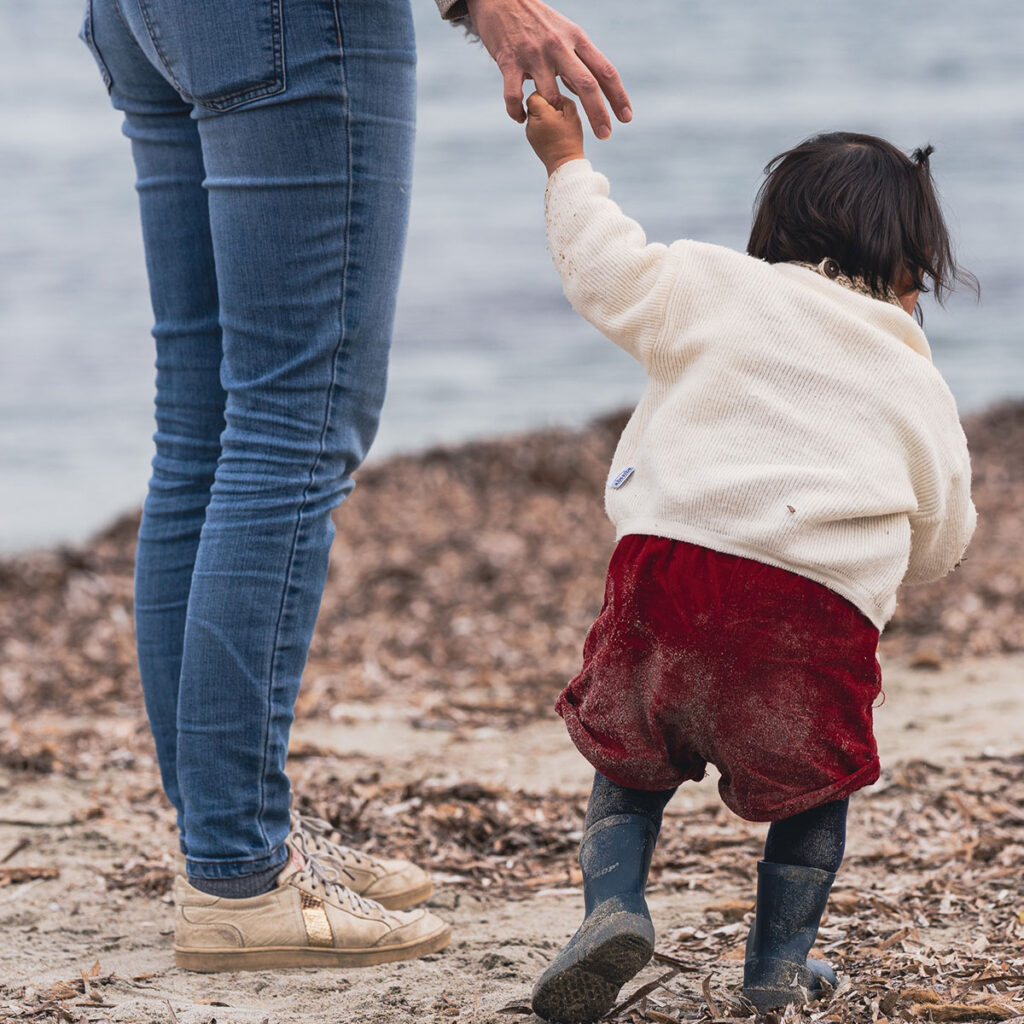
Praising Children
Question: I have read that praising my child is important for her self-esteem, but then I have also read that too much praise can spoil my child. I’m confused. How should I praise my child?
Kids are amazing and it’s easy to find ways to authentically praise your child while, at the same time, promote the life skill of Taking on Challenges.
Taking on Challenges: Life is full of stresses and challenges. Children who are willing to take on challenges (instead of avoiding them or simply coping with them) do better in school and in life.
We typically think that children who are praised a lot will feel better about themselves, but this is not necessarily true. It’s how we praise children that matters. Carol Dweck of Stanford University found that adults who praise children for their personality (“you are smart” or “you are so talented”) develop what she calls a fixed mindset. They begin to believe that these characteristics are inborn and can’t be changed.
As a result, they want to hold onto these labels and then become less willing to try things that are hard, where they might not seem as smart. On the other hand, children who are praised for their effort (“you tried so hard”) or their strategies (“you figured out how to put on your sock by yourself”), develop a growth mindset, where they see their abilities and intelligence as something that can be changed.
Children who hold a growth mindset are more likely to try really hard in the face of challenges.
Praise effort and strategies, not intelligence or personality. Rather than praising your child’s personality or intelligence (“You’re so ‘artistic’ or ‘athletic’”), criticizing him or her (“You’re lazy”), or attributing their accomplishments to luck, instead praise your child’s efforts or strategies. When your child sees that she or he can try and learn something new, your child will learn to feel good about herself.
Help your daughter set her own challenging goals and to work toward them. Taking on Challenges includes believing that we can do things even when they are hard. Encouraging her when she’s working hard toward meaningful goals is important. It’s best not to praise your child all of the time for everything because the praise becomes less special and thus has less impact. Children will learn to work diligently on a goal when they are intrinsically motivated rather than doing something for approval.
1. Be a role model and promote curiosity.
Set goals and work toward them and share your experiences, strategies and feelings about the process with your child. It’s important to share why you are working toward the goals (personal satisfaction, new knowledge, etc.) so your child can see that praise is not the reward, but rather, the experience and process.
The American Academy of Pediatrics suggests the importance of setting appropriate expectations for success.
2. Set appropriate expectations.
Setting expectations for goals that are not too low or too high is critical to developing competence and confidence. If you are overprotecting your child, and she is too dependent on you, or if expectations are so high she’ll never can succeed, she may feel powerless and incapable of controlling the circumstances in her life.
3. Help your child find ways to contribute.
Self-esteem is a key feature of leading a fulfilling life. Children develop a positive sense of self if they think they’re making a contribution. Help your child find things to do that makes her feel good, like taking care of the dog or making a card for someone who feels sick.
©2023 Mind in the Making
Helping Children to Learn to Take on Challenges: Lessons from Heidelise Als
Helping Children to Learn to Take on Challenges: Lessons from Heidelise Als
- By Ellen Galinsky
- Boosting Life Skills, From the Field
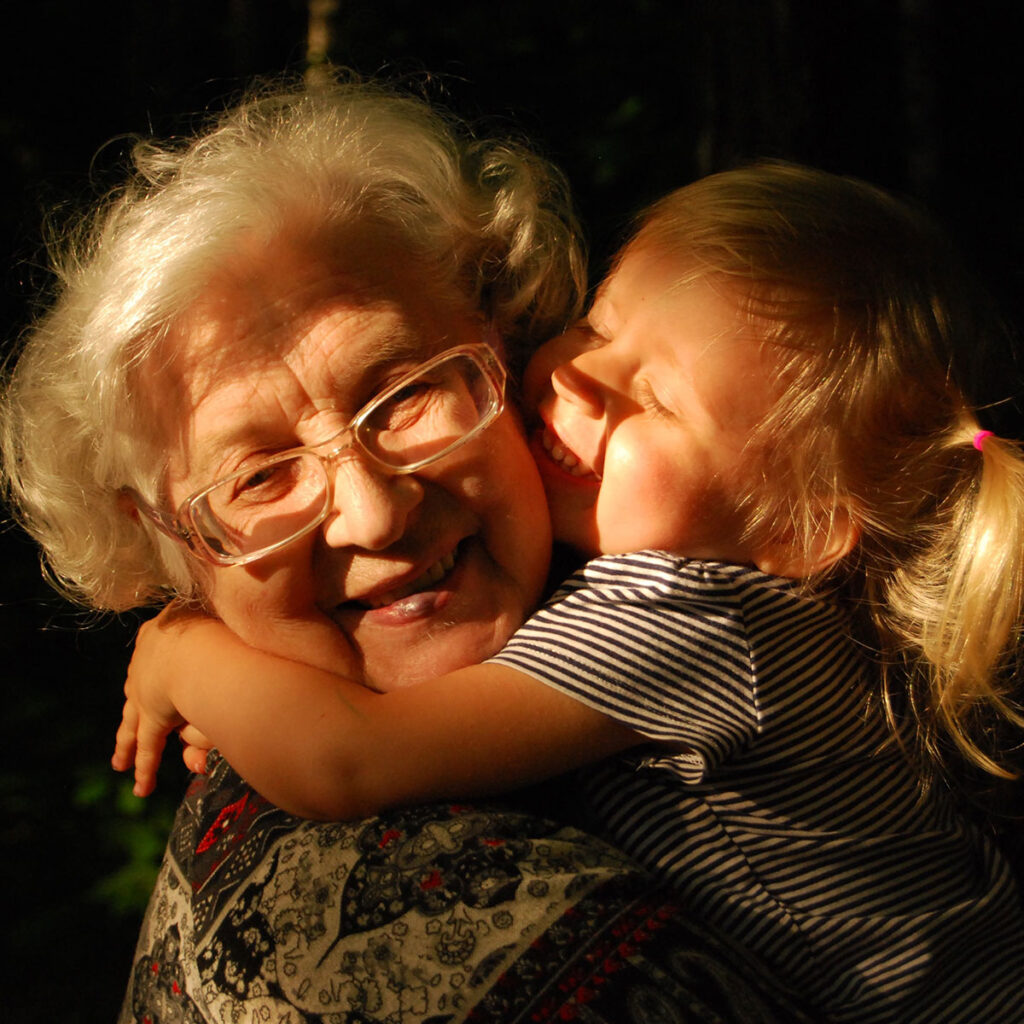
I’m writing about is Heidelise Als of Harvard University, because her studies are so instructive in how we can help children deal with challenges and learn to become stronger as a result.
Perhaps surprisingly, learning this skill doesn’t just happen when children are older. Als’ research is with pre-term babies born 10 to 12 weeks before their due date—the most fragile babies in neonatal intensive care units. When adults watch what young children do to cope successfully and then create situations where they can do more of the same, the process for learning to take on challenges is seeded.
The insight that led to Als’ research began in her native Germany when she was as a teacher of 3rd grade boys. One of the boys, Reinhart, always came to school early, sat in his seat close to the front of the classroom, lined up all of his pencils and books on the desk and was ready for the day to begin. Since Reinhart was doing very well and got good grades, Als decided to move him farther back in the room so another child who needed extra help could have a seat in the front.
She says:
Reinhart moved promptly, yet the next day he didn’t come in. He had never missed a day of school. I was very concerned. He didn’t come the next day.
After a few days, Als stopped by the bakery Reinhart’s family ran. His mother told her that the doctor couldn’t find anything wrong, but her son had been vomiting. The clue came when Reinhart’s mother mentioned, “He did tell me you moved his seat, and he’s now sitting farther back.” Als says:
I learned from that that despite seeing the image of a very competent child, I should have known from his need to have everything lined up at the start of the school day—that he didn’t have the flexibility that other children had.
Reinhart was given his old seat back when he returned to school, but Als gained even more from that experience. She learned how important it is to “read” the language of children’s behavior, to figure out how they cope best and then build on their own positive coping strategies. This lesson was reinforced after she moved to the U.S. to attend graduate school and had her own child, who is significantly brain damaged. She had to learn to understand the language of his behavior in order to help him.
Als brought that sensitivity into her research on premature babies. Through advances in technology in the 1970s, these babies, who couldn’t yet breathe on their own, could be kept alive with medical ventilators that, in effect, breathed for them. What really interested Als was “to see what these babies were up against” and how they were handling these stressful situations.
As she observed them, it became clear to her that good medical care was coming at the price of good developmental care:
The premature babies would be pinned down, held down, strapped down, and even chemically treated, if needed, so that they would not breathe against the ventilator in order to let the ventilator do the work that it needed to do.
A similar kind of scene took place when a nurse or doctor wanted to check on a baby, listen to the baby’s heart rate or change him or her: The baby would just splay out—all four limbs would fly out, and then the baby would try to grasp at something, but the nurse by then would already be putting her stethoscope on the chest, listening to the chest sounds. And then she would turn the baby over again and listen to the back, and then she would start to suction his lungs and then she would give a nebulizer treatment.
As the check-up progressed, Als reports, babies would become more and more distraught; finally, they would “go limp and typically stop breathing.” It was clear to Heidelise Als that the medical care was so focused on caring for these premature babies’ hearts or lungs that they were neglecting the care of the whole child:
It seemed we were wasting a lot of the baby’s energies that were very precious. We were going against the baby. We were pushing the baby to become exhausted and give in.
When a baby who was initially feisty gave in, the medical charts would record that the baby had become well adjusted. But Als saw a different reality:
The baby had given up. The baby just let the world happen.
Als and her colleagues—nurses and doctors—set out to improve developmental care and to document that it can make a difference. They thought of this as listening to their behavioral “language.” She says:
If we can understand the ‘words’ the baby is saying, maybe we can fill in the meaning of the sentence and understand the message.
These observations led to solutions. For example, if the baby’s hands splay out, give the baby something to hold onto. If the baby is squirming under the bright lights, make the lighting softer. If the baby is getting agitated, hold the baby until his or her breathing becomes more stable. After documenting and recording behavior, they launched into a study where the nurses “read” and then responded to the baby’s behavior in ways that built on that baby’s coping strategies, and thus gave the baby more control.
The results of this experiment were impressive. There was reduced severity of chronic lung disease in these premature babies, improved brain functioning, improved growth and earlier release from the hospital. In addition, their care was significantly less costly.
Here’s the lesson I take from this. Children, even those as young as premature infants, are less prone to the harmful effects of stress when they are supported in managing their own stress by being helped to use the strategies they have for coping and for calming down.
And when children are older, they can become an even more active part of figuring out themselves how to deal with tough times. Als tells the story of a child for whom any reminders of 9/11 (like fire trucks) would trigger emotionally flooding. With the help of adults, he created his own strategy to calm down. He would put his head down on the table to “think” and would wait until he had “thought enough”—and then he was ready to go on.
From these studies, it is clear that we can help children learn to handle tough times if we enable them to become increasingly active partners in creating their own solutions. It has worked for me and it has worked for my children. What about you?
This story is taken from Mind in the Making.
